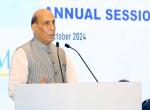Ever since the Chinese debacle of 1962, whenever the nation suffered any serious security setback there has been a clamoring for intelligence reforms. As if following a well rehearsed drill, Government assures urgent reforms, committees are formed, some changes are brought about and we wait till the next episode again triggers the cycle. To be fair, this is despite the fact that governments are sincere in their pronouncement and the intelligence apparatus of this country has been manned and led by some of the brightest persons of high professionalism, commitment and patriotism in this field. It begs an answer to the basic question why the Indian intelligence fails to meet the national expectations. It would be evasive to take umbrage under the excuse that it is a global phenomenon and India is no exception. The fact that intelligence achievements are shrouded in secrecy while its failures, often uninformed, are issues of loud public debate based on surmises, conjectures and lack of understanding of how the complex intelligence machinery operates can comfort the professionals but does little good to the country at large. Just as there is nothing so bad which cannot be defended, there is nothing so good which can not be improved. As intelligence heavily impacts on national security the country deserves the best that it can afford. India needs to transform and not reform its intelligence apparatus. The construct of reforms is of redressing the past errors and not bringing about changes focusing on the future. It assumes that if shortcomings of the past were redressed the future would be secure. In the modern dynamic security scenario, this is a highly erroneous assumption and if we stick to it, we will keep on getting surprised. Indian intelligence needs to start looking at the world purely from the futuristic scenario. What are the portents of the future and the best design of a machinery and system which could effectively and adequately meet the threats needs to be formulated. Working backwards, we may retain all that is useable and useful and discard the dead weight. This is what will bring about Revolution in Intelligence Affairs (RIA), an emerging global concept.
The first problem emanates from the fact that after attainment of independence, India inherited a security apparatus, intelligence included, designed and structured to perpetuate and protect the political, military and economic interests of a colonial empire. On considerations of continuity and stability the intelligence apparatus, secret arm of the Raj, was retained without redefining its organizational objectives, revisiting its operating doctrines and evaluating the needs and vulnerabilities of free India, both within and without. Advantages notwithstanding, by default, it became an instrumentality of enduring to protect and perpetuate the rule of those in power, a fault of its basic colonial architect. This undefined but deeply ingrained paradigm conditioned its stimulant – response relationship casting its shadow on its multifarious responsibilities; making political perspective coterminous with national perspective. In the eventuality of clash of interests, the system automatically tilted in favour of the former. The genius of some stalwarts of the yesteryears lied in persuading the people in power that their political interests would be best served by upholding the national interests. The lesser mortals took the reverse course. This basic infirmity to some extent was rectified when the NDA Government for the first time defined the charter of intelligence agencies, following the recommendations of Group of Ministers in 2001.
It needs to be emphasized that parameters of India’s security extend well beyond narrow confines of its geographical land borders. Given its geo-political setting, economic interests and security needs, the arc of India’s strategic interests extend from the Persian Gulf in the west to across the Straits of Malacca in the east, and from the Central Asian Republics in the north to the equator in the south. The nation of over one billion people occupying seventh largest land area, its land frontiers exceeding 15,000 kms a coastline of 7,600 kms and an Exclusive Economic Zone of over two million square kilometers needs a wide intelligence swath with proportionate depth. Momentous changes are taking place in the region with growing rivalries for dominance of Indian Ocean, China emerging as a major player with barely concealed strategic objectives, competitiveness for energy sources and rise of Islamic extremism. All of them have serious security implications for India.
The end of cold war ushered a unipolar world catapulting US as the sole super power. Soviet Union, India’s strategic partner of long standing and a major source of our defence supplies stands disintegrated. Aggressively focused on its economic and political agenda, US is pursuing its global interests, which, at times, militate against economic and strategic interests of countries like India. Indian discomfitures during WTO deliberations and following the nuclear tests in May 1998 are illustrative. On the positive side, post cold war dispensation heralded new possibilities of cooperation and positive engagement of India with the West. The process of globalization has offered India new economic opportunities and technological accessibility placing it at a higher strategic orbit as a global player. This opening up to the world has also affected some other aspects of national life like greater accessibility to our markets, interface with our technological facilities, exponential increase in international travel, lowering of regulatory barriers, revolution in informatics, globalised communication and opening up of cyber space etc. Host of intelligence vulnerabilities are disguised in the package which needs to be addressed. For India, to pursue its legitimate global economic ambitions, has to provide level playing field to foreign companies thereby increasing the requirements of economic intelligence, both in the defensive and offensive mode, acquisition and integration of new capabilities, training of manpower, technology upgradations, refinement of trade craft, etc. by the Intelligence agencies.
Internally, India’s communal, caste, linguistic and ethnic fault-lines, economic depravities and disparities, political conflicts and turmoil, craving for fast changes in a society beleaguered by centuries of inequality, poverty and exploitation, generate conflicts. They necessitate an extensive, fine tuned and alert intelligence apparatus.
Conventionally the causes, instrumentalities, resources and consequences of internal threats were indigenous as against the external threats where they were of external origin. It no more holds good. In the new dispensation, internal security has become more vulnerable to external stimulants whose politico-strategic objectives, planning, motivation, finances and resources, are all external and only the consequent effects, in the form of depredations and destructions, are domestically experienced. To compound the problem, these external forces often develop connectivity with domestic fault-lines to make them appear to be an internal security problem, providing an alibi and deniability to the real perpetrators. The democratic freedoms, soft governance, money power to soborn legal systems, soft laws etc. are exploited by the terrorists to their advantage. While the country’s vibrant democracy, economic growth, social transformation etc. are steadily reducing threats from conventional sources, except probably the Left Wing Extremism, the external factor has raised our overall vulnerability several notches up.
From an intelligence perspective, India’s security environment in the last decade and a half has undergone momentous changes. This changed conflict profile in its matrix embodies serious long-term security implications for India. Their impact can be calamitous which statistical compilations, under a law and order paradigm, can hardly elucidate. India will have to grapple with the new realities as they are emerging and not as we wish them to be.
With wars increasingly becoming cost-ineffective, high-risk ventures of unpredictable consequences, Covert Action (CA) has emerged as a new instrument of State Policy. It is a low cost sustainable offensive, not only employed by asymmetric powers too weak to exercise other options, but also by the others. Moral pretensions and denials notwithstanding, this low-cost option has been used equally by powerful countries like USA to achieve politico-strategic objectives (like against the Soviets in Afghanistan) and weaker States like Pakistan to bleed India through terrorism.
The reality of grudging acceptability, if not legitimacy, acquired by the doctrine of ‘protecting supreme national interests through all means’ through Clauswitz’s ‘war through other means’, has unfortunately bypassed India. This, despite the fact that India has been the worst victim of the foreign covert offensive leading to nearly 70,000 civilian deaths and over 9,000 SF personnel killed. Though beleaguered for nearly two decades, India has failed to develop capabilities and a viable national response to the CA threats, both at strategic and tactical levels. Response has been episodal with short memories and a perspective with time consistency, at best, lasting till the next elections. CA is a reality that this country in various hues and disguises will have to tackle for a very long time. This is a threat against which Indian intelligence will have to develop counter capabilities both in defensive and defensive-offence modes. Their role assumes added importance since in this war intelligence agencies are the primary, if not the sole, players.
Pakistan, with western assistance, established a massive Covert Action infrastructure with global networking of radical Islamic groups, Muslim underworld, drug syndicates, gun runners etc. during the war in Afghanistan. It repositioned this apparatus to bleed and destabilize India. It wanted to replicate the Afghan model in Kashmir, hoping to make it a theatre of global Jehad. Though unsuccessful in achieving this objective, over the years, the covert apparatus became an integral part of Pakistan’s war-machine and an instrument of its state policy. Pakistan’s temporarily pegging down violence levels to meet political or diplomatic requirements at any given point of time should not be construed as reversal of its policy. It is bound to endure as long as it remains a low cost option against India, perceived as a strategic adversary.
Acquisition of nuclear and missile capability by Pakistan, through most questionable means, has substantially restricted India’s option of utilizing its conventional military superiority to keep Pakistan under check. Nuclearised Pakistan, also, cannot be internationally isolated. While deterrence threshold has substantially come down, tolerance threshold has proportionately increased, at least as estimated by Pakistan while calibrating its covert offensive against India. If we have to force Pakistan to revise its India estimates non-conventional responses will have to be pressed into action. This will call for revisiting operational doctrines, acquisition of new capabilities, developing new leverages - all requiring a political will. This task will have to be addressed by intelligence agencies as a high priority item.
Global resurgence of Islamic radicalism and growth of Jehadi Wahabism poses a serious security and ideological threat given India’s big Muslim population on one hand and its being flanked by two Islamic countries, where radical Islam is in sharp ascendancy, on the other. It is to the credit of Indian Muslims that they have so far, by and large, resisted these ideological onslaughts but the globally vitiating environment and incessant subversive propaganda by pan-Islamic forces is bound to have its impact. Onslaught of this exported variant of Islam has to be countered – ideologically, politically and physically.
In last five years, over three hundred Pak ISI modules operating in the country’s hinterland have been unearthed. Many times more may be functioning with impunity of which no credible estimate can be made. A large number of Pakistani youth trained by the ISI and disguised as Indian citizens have been strategically positioned as part of an intricately networked covert apparatus. Mushrooming of Madrasas and Islamic institutions in large numbers propagating an ideology of hate and exclusiveness, particularly in the border areas, is sinister. ISI has established anti-India espionage, subversive and saboteurs networks in Bangladesh, Nepal, Middle East etc. Intelligence encirclement of India is being attempted as a part of a multi-pronged covert offensive. Collaborative networking with the underworld, gun runners, drug syndicates, currency counterfeiters, hawala operators, border couriers etc. are being used as integral part of covert apparatus to destabilize India. The conventional responses are increasingly proving inadequate in the wake of their global reach, money power, political linkages and ability to suborn the system. Intelligence will have to play a proactive role in meeting these threats.
Demographic invasion from Bangladesh, has assumed a serious security dimension. In many of the bordering districts it has brought about a total demographic transformation, forcing the original inhabitants to dispose off their lands and flee. Instead of abating, last two years have witnessed an unprecedented increase in the inflow – the new migrants becoming more abrasive, emboldened and considering their migration almost as a matter of right. Subdued though, voices in support of greater Bangladesh have started surfacing both in Assam and Bangladesh. Though lying low at present for tactical reasons, nearly a dozen jehadi groups have come into existence in North-East with cadres trained in Bangladesh and Pakistan. Easy channels of supplying weapons through a long and porous 5,000 Km. border with Bangladesh already exist. Clandestine, subversive and anti-national propaganda on communal – separatist lines is being carried out. A virulent form of militancy can erupt anytime in next 5 to 10 years seriously destabilizing the region whose 99% borders are international borders.
The illegal immigrants from Bangladesh, who now well exceed over 20 million, are no more confined to seriously affected states like Assam, West Bengal and Bihar. They have found new habitations in length and breadth of the country. Most of them have been able to acquire identity documents with local political patronage and connivance of corrupt officials. The local Muslims in some areas are facilitating their settlements and helping them in finding jobs, shelter, procurement of ration cards, identity documents, etc. Following the new rules formed under Foreigners Act immediately after the repeal of IMDT Act by the Supreme Court, the illegal migration has shown a sharp upward spurt.
This large diaspora no more just threatens demographic composition, social harmony, denial of economic opportunities and civic amenities to our own poor people but has become a terrorist support base. It provides a convenient alibi and sheltering facility to the terrorists and fundamentalists who are now increasingly using Bangladesh as a safe base and launching platform. These immigrants also bring with them deeply grouted seeds of anti-Indianism and fundamentalism. Their infectious effect on Indian Muslims is getting increasingly visible. The border is porous and the infiltrators get full support from Bangladesh Border Forces. This unending stream of migrants is likely to become much more pronounced in the times to come, given the push factor in Bangladesh and the pull factor on Indian side.
Next to the money factor, the foreign bases of North-Eastern insurgents in Bangladesh and Myanmar, is today the main sustaining factor of insurgencies in the North-East. Ideology has taken a back bench. In addition to the safe heavens, these countries are being used by insurgents to smuggle weapons, impart training and as transit routes for their leaders. One of the strategic considerations for Bangladesh to provide sanctuaries to them is the advantage it provides in pushing illegal migrants to India. It makes it difficult for the insurgents to direct their anti outsider agenda against the Bangladeshis. Moreover, it focuses the attention of Security Forces to insurgent activities thereby reducing the pressure on the illegal immigrants. India’s look east policy and developing surface transport facilities to link South-East Asian countries will present some new security problems. Intelligence infrastructure in the region will have to be strengthened to prevent abuse of new facilities for movement of drugs, arms, explosives, counterfeit currencies, smuggled goods, etc.
Inexorable growth of Left Wing Extremism in the country’s hinterland is another area of grave security concern. It has the potential of spreading fast and undermining India’s democracy, constitution, rule of law and social harmony. The rise in armed cadres, militarization of the movement, their ability to raise funds and increase in fire power are causes of grave concern.
The CPN (Maoists) becoming equity shareholders in Nepal’s new power dispensation also have implications for India’s internal security. Though their transition to democratic polity could have favourable fallout, the unfolding political and security scenario would need to be closely monitored. Some of the dispositions of Nepalese Maoists vis-à-vis special bilateral relationship between the two countries is, however, a matter of disquiet.
Technology upgradation and integration by the intelligence agencies will be one of the major futuristic requirements of Indian intelligence. Unlike other areas, most of the sophisticated intelligence technologies falls in denied areas and can not be easily obtained from external sources. For reasons of security, the R&D tasks can not be allocated to research institutions which do not adhere to required level of security insulation. The agencies themselves do not have the elaborate infrastructure and trained manpower which can undertake high precision research projects. However, country has technological capabilities of high order in various advanced areas, which with suitable modifications can be improvised for intelligence applications. Some of the commercially available high technologies available abroad can be imported and integrated with required modifications. A specialized technical intelligence agency was created in 2003 by the government to meet diverse high technology requirements of the intelligence agencies. It needs to be given all the boost and as being a capital intensive venture, the works should not suffer for want of adequate financial resources.
Lack of coordination is often blamed for many intelligence failures. However, intelligence being a highly sensitive and multilayered activity with diverse consumer requirements – perfect coordination as a concept is faulty and as a goal non-achievable. What should is attempted is system based convergence at different levels on a need-to-know basis. Convergence is an inbuilt system integration, as part of the process itself, whereas coordination is an outside effort to combine two or more departite elements through an institutional or individual effort. While coordination is a deliberate independent activity convergence is automated. Instead of convergence we inadvertently encouraged divergence by splitting the intelligence bureau into IB and RAW and allowing mushrooming of intelligence outfits with ill-defined objectives and nebulous accountability. This has led to lack of synergy, communication gaps and the nation deprived of making optimal use of its knowledge reservoir and intelligence assets. New systems encouraging convergence at tactical, strategico-tactical and strategic levels need to be evolved.
Reforming the existing set up probably is not the answer to achieve the above objectives and many more which have not been dealt with in view of their sensitivity. It will require a total transformation. We need to identify our intelligence needs, prioritise them according to national requirements and plan a model structure to achieve the laid down objective – one at a time. We should then head hunt for the best Indian – professional, patriotic and committed - available for the job not bothered by service, seniority or petty bureaucratic considerations. Even a private sector man, or an Indian abroad after due security clearances, should not be debarred if he meets the requirements of being inducted into the national security system and has the ability to deliver. From the existing organisations, the required manpower, resources, facilities and systems may be called and a dedicated platform built to meet a particular intelligence need – ensuring its seamless integration with the total set up. The large bulk of generalists, with little specialization, can continue to do the routine intelligence work which is plenty in these organisations and is important in its own right.
The author is a former chief of the Intelligence Bureau
Published in First Netaji Subhash Commemorative Souvenir released on his birth aniversay function attended by Prime Minister, Manmohan Singh, Leader of opposition LK Advani Etc. on 23 Jan 2007









Post new comment